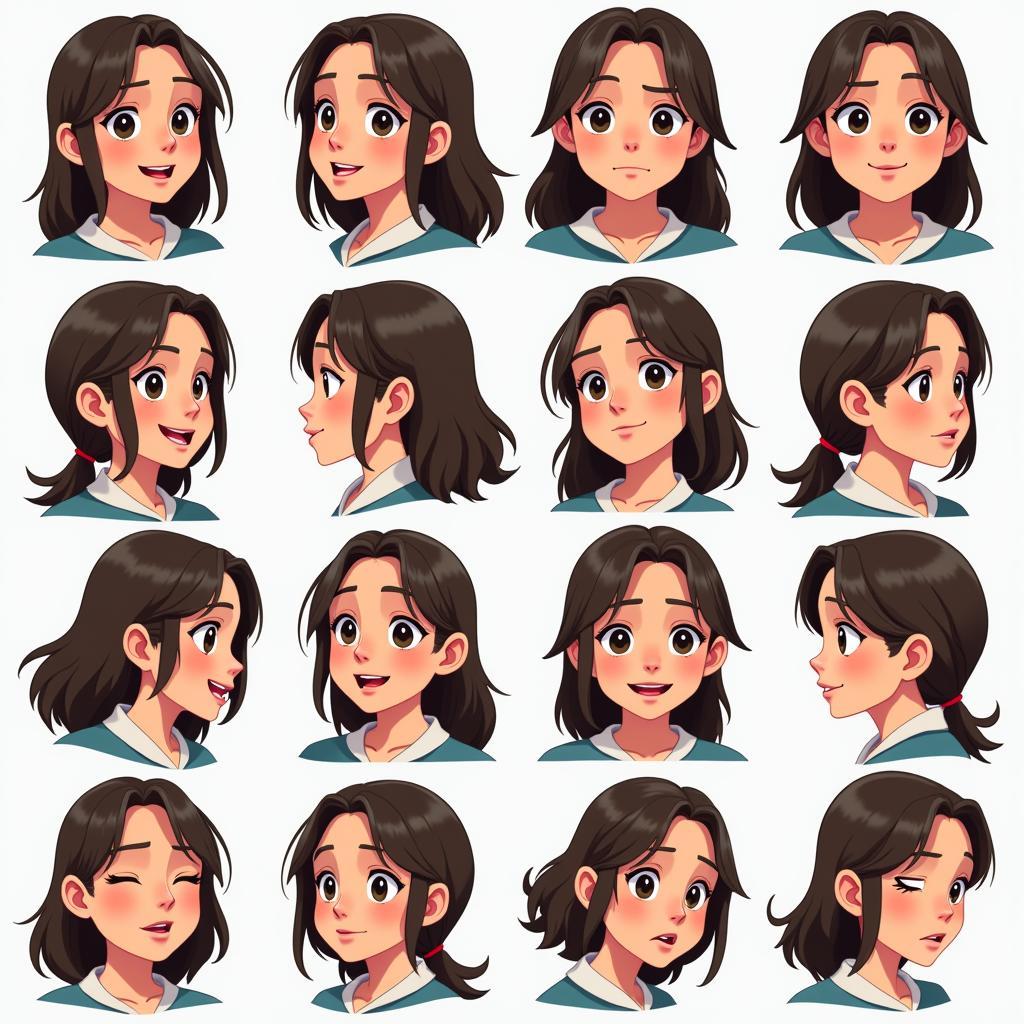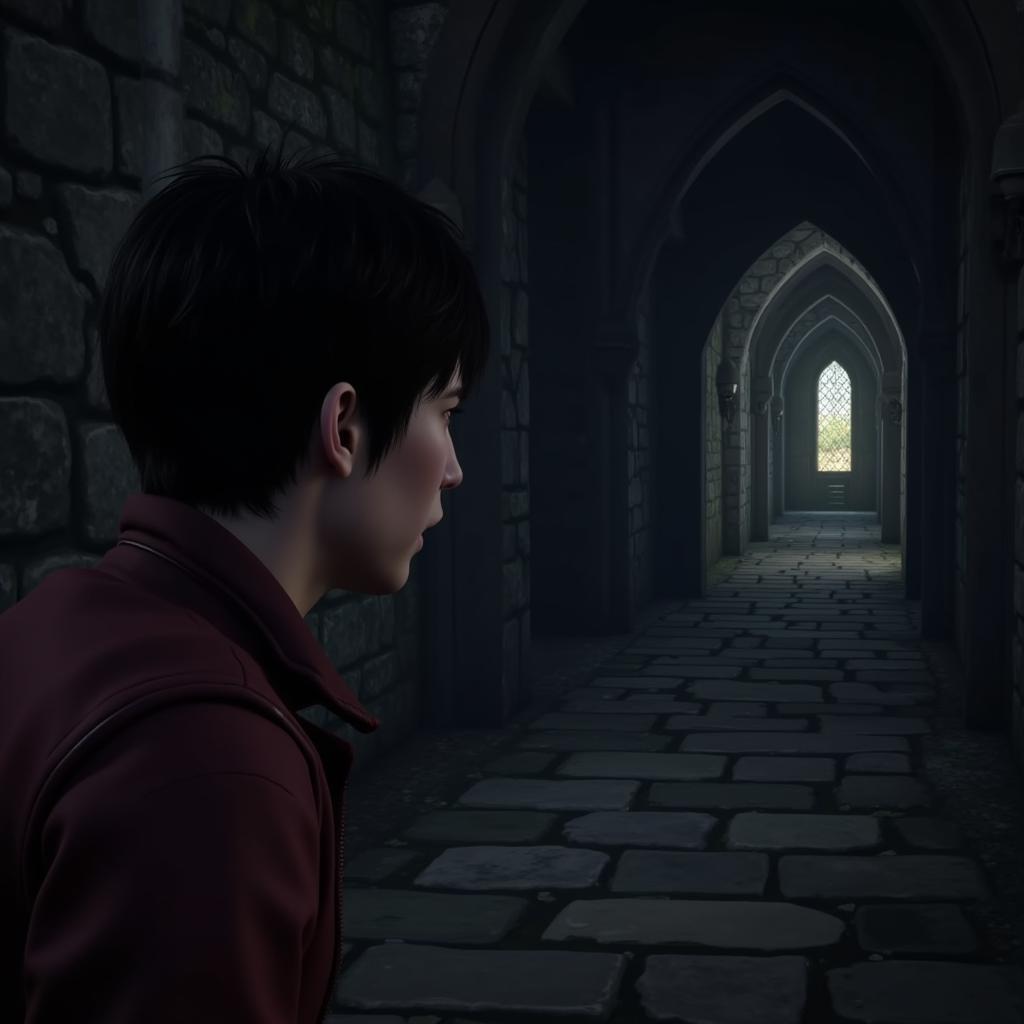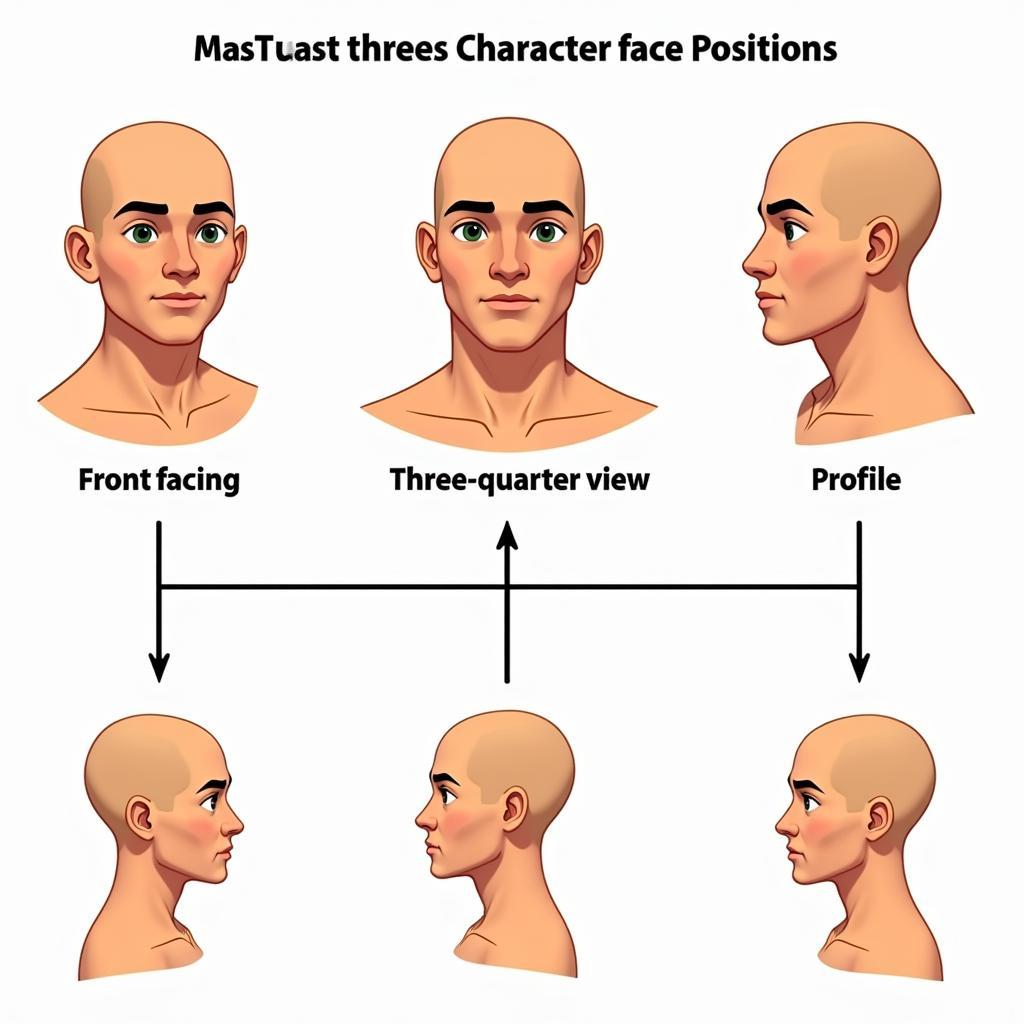Face Positions play a crucial role in shaping a game’s visual appeal, storytelling, and overall player experience. Whether it’s a photorealistic adventure or a stylized platformer, the way a character’s face is positioned can convey a wealth of information, from subtle emotions to dramatic plot twists. But what exactly are face positions, and how do developers utilize them effectively?
Delving into the Nuances of Face Positions
In the realm of game development, face positions refer to the specific orientations and angles of a character’s head and face in relation to the camera and other elements within the game world. These positions are carefully crafted to evoke specific emotions, guide the player’s attention, and enhance the overall narrative experience.
 Character Face Positions Grid
Character Face Positions Grid
The Power of Subtlety: Conveying Emotion Through Face Positions
One of the primary functions of face positions is to convey a character’s emotions effectively. By subtly adjusting the tilt of the head, the direction of the gaze, or the slight parting of the lips, developers can create a wide spectrum of emotional responses in players.
For instance, a character looking directly at the player with a raised eyebrow might suggest suspicion or disbelief, while a downward gaze coupled with a frown could indicate sadness or contemplation. These subtle cues add depth to the characters, making them feel more relatable and human.
Guiding the Player’s Eye: Using Face Positions for Narrative Focus
Face positions are also instrumental in directing the player’s attention to crucial elements within the game world. By strategically positioning characters’ faces, developers can subtly guide the player’s gaze towards important objects, characters, or events, enhancing the storytelling and gameplay experience.
Imagine a scenario where a character turns their head towards a hidden passageway, their eyes widening in surprise. This subtle cue not only reveals the character’s emotional state but also subtly prompts the player to investigate the newly discovered area.
 Character Discovering Hidden Passage
Character Discovering Hidden Passage
Types of Face Positions: A Closer Look
Game developers employ a variety of face positions to achieve different effects. Some of the most common types include:
- Front-facing: This position, where the character’s face is directly towards the camera, is often used for close-ups, dialogue scenes, and moments of intense emotion.
- Three-quarter view: This angled position, showcasing both the front and side of the face, is versatile and widely used in various game genres, adding depth and dynamism to character models.
- Profile view: Showcasing only the side of the face, this position can create a sense of mystery, intrigue, or contemplation, often used during reflective moments or dramatic reveals.
 Character Face Position Comparison Chart
Character Face Position Comparison Chart
The Evolution of Face Positions in Gaming
As technology advances, so too does the sophistication of face positions in video games. Early games relied on pixelated sprites with limited facial expressions, but modern titles boast highly detailed character models capable of conveying a vast range of emotions through subtle facial animations and lifelike movements.
Motion capture technology and advanced animation techniques have enabled developers to create incredibly realistic and expressive characters, blurring the lines between the virtual and the real. This evolution has significantly enhanced the immersive quality of video games, drawing players deeper into the narrative and forging stronger connections with the characters.
Conclusion
From conveying subtle emotions to guiding the player’s attention, face positions play a pivotal role in shaping the overall gaming experience. As technology continues to evolve, we can expect even more innovative and nuanced applications of face positions in video games, further blurring the lines between reality and the virtual realm.





